Sources
- Painter, Sidney. "The Lords of Lusignan in the Eleventh and Twelfth Centuries." Speculum, Vol. 32, No. 1 (Jan., 1957), pp 27–47.
Hugh II (born c. 910-915 - died 967), called Carus (Latin for the Kind), was the second Lord of Lusignan, the son and successor of Hugh I Venator. According to the Chronicle of Saint-Maixent, he built the castle at Lusignan. Hugh III Albus, who emerges from historical obscurity in the next generation, was probably his son.

Isabella of Angoulême was Queen of England as the second wife of King John from 1200 until John's death in 1216. She was also suo jure Countess of Angoulême from 1202 until 1246.
Hugh may refer to:
James I was the youngest son of King Hugh IV of Cyprus and by 1369 held the title "Constable of Jerusalem." When his nephew Peter II died in 1382, James became King of Cyprus. James was also titular King of Armenian Cilicia and Jerusalem 1382–1398.
Angoulême (L'Angoumois) in western France was part of the Carolingian Empire as the kingdom of Aquitaine. Under Charlemagne's successors, the local Count of Angoulême was independent and was not united with the French crown until 1308. By the terms of the Treaty of Brétigny (1360) the Angoumois, then ruled by the Counts of Angoulême, was ceded as English territory to Edward III. In 1371 it became a fief of the Duke of Berry, before passing to Louis I, Duke of Orleans, both of whom were cadets of the French royal family. From then on it was held by cadets of the Valois House of Orleans, until Francis, Count of Angoulême, became King of France in 1515. Angoumois was definitively incorporated into the French crown lands, as a duchy.
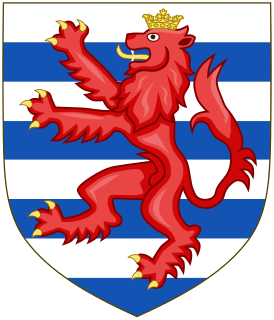
Hugh II of Cyprus was king of Cyprus and, from the age of 5 years, also Regent of the Kingdom of Jerusalem.

The House of Lusignan was a royal house of French origin, which at various times ruled several principalities in Europe and the Levant, including the kingdoms of Jerusalem, Cyprus, and Armenia, from the 12th through the 15th centuries during the Middle Ages. It also had great influence in England and France.
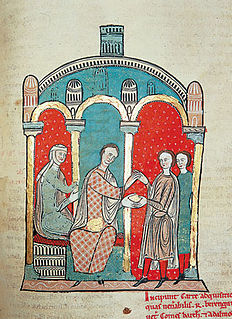
Almodis de la Marche was a French noble. She was famed for her marriage career, in particularly for her third marriage to Ramon Berenguer I, Count of Barcelona, with whom she committed double bigamy in 1053, for which the Pope had them excommunicated.
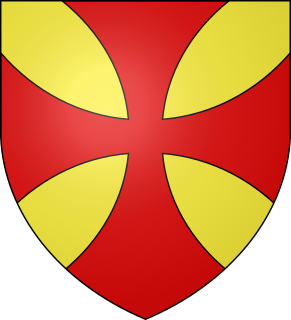
The House of Ibelin was a noble family in the Crusader Kingdom of Jerusalem in the 12th century. They rose from humble beginnings to become one of the most important families in the kingdom, holding various high offices and with extensive holdings in the Holy Land and Cyprus. The family disappeared after the fall of the Kingdom of Cyprus in the 15th century.
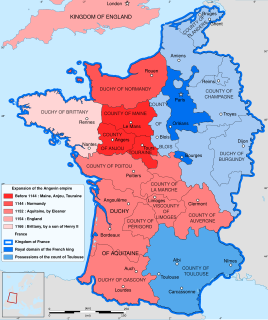
The County of La Marche was a medieval French county, approximately corresponding to the modern département of Creuse.

The Principality of Galilee was one of the four major seigneuries of the crusader Kingdom of Jerusalem, according to 13th-century commentator John of Ibelin. The direct holdings of the principality centred around Tiberias, in Galilee proper, but with all its vassals, the lordship covered all Galilee and southern Phoenicia. The independent Lordship of Sidon was located between Galilee's holdings. The principality also had its own vassals: the Lordships of Beirut, Nazareth, and Haifa.

Hugh X de Lusignan, Hugh V of La Marche or Hugh I of Angoulême succeeded his father Hugh IX as Seigneur de Lusignan and Count of La Marche in November 1219 and was Count of Angoulême by marriage.
The Kingdom of Cyprus, as an offshoot of the Kingdom of Jerusalem, maintained many of the same offices, such as: seneschal, constable, marshal, admiral, Chamberlain, and chancellor.
Hugh V, called the Fair or the Pious, was the fifth Lord of Lusignan and Lord of Couhé. He succeeded his father, Hugh IV, sometime around 1026.
Hugh VIII the Old of Lusignan or was the eldest son of Hugh VII and of Sarrasine or Saracena de Lezay. He became Seigneur de Lusignan, Couhé, and Château-Larcher on his father's death in 1151. Born in Poitou, 1106–1110 or some time after 1125, he died in the Holy Land in 1165 or 1171.
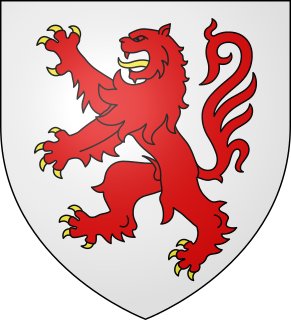
The Ramnulfids, or the House of Poitiers, were a French dynasty ruling the County of Poitou and Duchy of Aquitaine in the 9th through 12th centuries. Their power base shifted from Toulouse to Poitou. In the early 10th century, they contested the dominance of northern Aquitaine and the ducal title to the whole with the House of Auvergne. In 1032, they inherited the Duchy of Gascony, thus uniting it with Aquitaine. By the end of the 11th century, they were the dominant power in the southwestern third of France. The founder of the family was Ramnulf I, who became count in 835.
Hugh XI de Lusignan, Hugh VI of La Marche or Hugh II of Angoulême was a 13th-century French nobleman. He succeeded his mother Isabelle of Angoulême, former queen of England, as Count of Angoulême in 1246. He likewise succeeded his father Hugh X as Count of La Marche in 1249. Hugh XI was the half-brother of King Henry III of England.
Hugh XII de Lusignan, Hugh VII of La Marche or Hugh III of Angoulême. He was the son of Hugh XI of Lusignan and Yolande of Brittany. He succeeded his father as seigneur of Lusignan, Couhé, and Peyrat, Count of La Marche and Count of Angoulême in 1250.

Yolande of Brittany was the ruler of the counties of Penthièvre and Porhoet in the Duchy of Brittany. Yolande had been betrothed to King Henry III of England in 1226 at the age of seven years, but married Hugh XI of Lusignan, the half-brother of Henry III. Through Hugh, she became Countess of La Marche and of Angoulême. She was the mother of seven children. From 1250 to 1256, she acted as Regent of La Marche and Angoulême for her son, Hugh XII of Lusignan.
Alix of Ibelin, was Queen consort of Cyprus and nominal Queen consort of Jerusalem as the second wife of King Hugh IV of Cyprus. She was queen from 31 March 1324 until Hugh's abdication on 24 November 1358. Two of her sons, Peter and James reigned as kings of Cyprus.